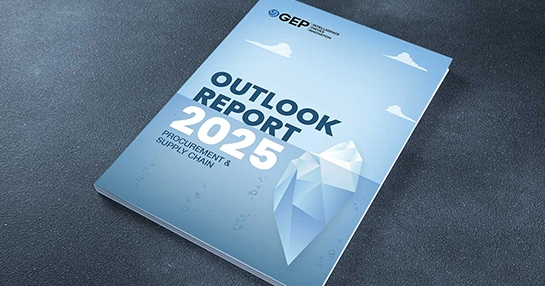
Compliance as a Service: Stop Supplier Risks Before They Cost You
- Compliance gaps often hide in supplier data no one regularly checks.
- Automated compliance tools spot issues faster than manual review ever could.
- Strong oversight keeps supply chains reliable when regulations keep shifting.
August 20, 2025 | Risk Management 6 minutes read
For procurement leaders, global supply chains no longer pose only cost and delivery challenges. Every supplier relationship and every purchase decision now carries compliance risks that can affect financial performance and corporate reputation.
Environmental regulations dictate sourcing practices. Labor laws and human rights standards govern supplier selection. Data privacy and anti-bribery laws require scrutiny of contracts and payment processes. These rules apply across jurisdictions, often with conflicting requirements and severe penalties for missteps.
Managing compliance in this environment requires more than periodic audits or checklists. It calls for constant monitoring, consistent enforcement, and the ability to respond quickly when risks emerge.
Many internal teams, even highly capable ones, are stretched too thin to provide this level of oversight. They are tasked with controlling costs and improving supplier performance. This makes it difficult to devote the resources needed to track and enforce complex compliance requirements at scale.
Compliance as a Service (CaaS) offers a clear alternative. Instead of managing these demands in isolation, companies can use external expertise and integrated systems that provide ongoing support.
CaaS helps procurement leaders identify risks, ensure compliance with key regulations, and avoid costly violations. It does this while allowing internal teams to focus on supplier performance, cost savings, and other strategic priorities.
Talk to our Expert
Contact Us
Why Do You Need Compliance As A Service?
The demands on procurement have expanded beyond just saving money. Leaders are now expected to ensure suppliers act ethically, protect the environment, secure data, and follow an increasingly diverse set of regulations across many regions.
Building large in-house compliance teams or relying on one-off consultants is often expensive and inefficient.
On the other hand, failing to comply can lead to severe consequences: huge fines, reputational damage, disruptions in the supply chain, and even criminal charges.
Procurement leaders need a solution that can keep up with changing rules, grow with the business, and provide real-time insight into supplier compliance without diverting core resources.
CaaS provides exactly this, making compliance an agile, continuously managed process instead of a burden.
5 Benefits of Compliance as a Service
Adopting Compliance as a Service offers procurement leaders a clear path to reduce risks and gain significant operational and strategic benefits. Organizations can reallocate internal resources, access specialized knowledge, and build a more transparent supply chain by outsourcing the difficulties of compliance management.
Cost-Effectiveness:
Maintaining an in-house compliance department, especially one that can handle global and changing regulations, can be very expensive. It involves significant costs for salaries, training, technology, and legal advice. CaaS providers operate on a shared services model, spreading these costs across many clients. This lets them to offer expert knowledge and advanced technology at a fraction of the cost of internal solutions.
For an organization, this means predictable subscription fees, avoiding the unexpected capital expenses and ongoing costs of building and maintaining their own compliance setup.
Access to Expert Knowledge:
The regulatory environment is constantly changing, with new laws and updates emerging regularly. Keeping internal teams fully informed and skilled requires continuous training and substantial investment. CaaS providers specialize in compliance, employing legal experts, auditors, and tech specialists who have deep, up-to-the-minute knowledge of various regulatory frameworks (e.g. EU's Corporate Sustainability Due Diligence Directive, General Data Protection Regulation, Foreign Corrupt Practices Act, UK Bribery Act). This immediate access to specialized expertise ensures your organization stays compliant with the latest requirements, reducing the risk of oversights or misinterpretations.
Improved Risk Management:
CaaS fundamentally changes compliance from an audit-driven process into a continuous risk management strategy. Providers use sophisticated monitoring tools and methods to constantly assess supplier compliance and alert your team to emerging risks before they become serious. This includes careful vetting of new suppliers, due diligence and flagging changes in a supplier's risk profile.
Improved Operations:
Beyond reducing risk, CaaS streamlines procurement operations. Manual compliance checks, document management, and reporting are time-consuming and prone to human error. CaaS solutions automate many of these processes, from supplier onboarding and document collection to creating audit trails and performance reports. This automation frees up procurement professionals from administrative tasks.
Flexible Solutions:
A key advantage of CaaS is its inherent scalability and flexibility. As a business expands into new markets, adds new product lines, or faces evolving regulatory demands, a CaaS provider can quickly adapt its services to meet these changing needs without requiring a complete overhaul of internal systems or a significant increase in staff. This agility ensures that the compliance framework remains strong and relevant, supporting business growth without becoming a bottleneck.
101 AI Use Cases in Procurement
Find proven and emerging AI applications across the S2P cycle
How Compliance as a Service works
CaaS operates as a comprehensive, outsourced solution that integrates smoothly with an organization's existing procurement processes. It combines technology and human expertise to deliver continuous compliance assurance.
Customization:
A successful CaaS engagement starts with a thorough assessment of the organization's specific compliance needs, industry regulations, risk tolerance, and existing procurement setup. The CaaS provider then customizes a compliance framework, selecting relevant regulations, defining specific performance indicators, and establishing tailored reporting structures that match the business’ goals and risk profile. This ensures the solution is not generic but a precise approach.
Implementation:
Once customized, the CaaS solution is put into action, often involving the integration of the provider's platform with the existing enterprise systems (e.g., ERP, P2P). This stage includes setting up data feeds, configuring automated workflows for supplier onboarding and due diligence, and establishing reporting dashboards. Training for the procurement team on how to interact with the CaaS platform and use its insights is also a critical part.
Monitoring and reporting:
This is the core of CaaS. The provider continuously monitors supplier compliance against the agreed-upon criteria. This involves ongoing collection and analysis of supplier data, vigilance for regulatory changes, and assessment of supplier performance against compliance KPIs. Regular, often real-time, reports are generated, providing procurement leaders with dashboards and alerts that highlight compliance status, identify potential breaches, and track remediation efforts.
Expertise:
At every stage, the CaaS model is supported by the provider's deep industry expertise. This team of legal, regulatory, and technical specialists translates difficult legal requirements into actionable compliance processes, interprets data, provides strategic advice, and ensures that the implemented solutions remain effective in a dynamic environment.
Risk management:
CaaS includes robust risk management principles. This involves early identification of compliance risks, continuous due diligence on suppliers, assessment of new regulatory threats and the development of mitigation strategies. The provider works with your team to establish clear protocols for managing non-compliance, from issuing corrective actions to offboarding high-risk suppliers.
Audits: CaaS greatly simplifies and strengthens audit preparedness. All compliance activities, records and reports are systematically maintained within the CaaS platform, creating an easily accessible and auditable trail. When audits occur, your organization can quickly demonstrate adherence to regulations, supported by comprehensive documentation and transparent processes managed by the CaaS provider.
Artificial intelligence (AI):
Modern CaaS solutions increasingly use AI and machine learning to improve efficiency and accuracy. AI can automate the scanning of vast amounts of regulatory text for changes, identify patterns in supplier behavior that indicate risk, categorize documents, and even predict potential compliance issues based on historical data. This integration of AI allows CaaS to provide smarter, faster, and more predictive compliance insights.
Understanding Compliance as a Service for Streamlined Operations and Risk Management
For procurement leaders, Compliance as a Service provides a clear path to meeting regulatory demands while controlling costs and strengthening supplier relationships. It brings together external expertise, automation, and continuous monitoring to support operational efficiency, protect reputation, and reduce risk. CaaS helps build a reliable, compliant supply base that supports long-term growth and resilience.
FAQ's
Who can benefit from CaaS most?
Organizations of all sizes, especially those with involved or global supply chains, operating in highly regulated industries (e.g., finance, healthcare, manufacturing, pharmaceuticals), or experiencing rapid growth that exceeds their internal compliance capacity, can benefit significantly from CaaS.
How does CaaS improve risk management?
CaaS improves risk management by providing continuous monitoring of supplier compliance, early identification of regulatory changes and emerging risks and real-time alerts. It enables more rigorous due diligence, creates auditable records and provides access to expert advice on developing and implementing effective mitigation strategies, thereby reducing exposure to legal, financial, and reputational risks associated with non-compliance.



